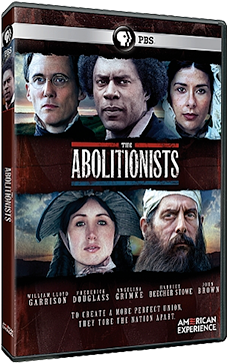Overview
Film Synopsis
The Abolitionists vividly brings to life the struggles of the men and women who led the battle to end slavery. Through innovative use of reenactments, this three-episode series puts a face on the anti-slavery movement—or rather, five faces: impassioned New England newspaper editor William Lloyd Garrison; former slave, author, and activist Frederick Douglass; Angelina Grimké, daughter of a rich South Carolina slaveholder; Harriet Beecher Stowe, author of the enormously influential Uncle Tom's Cabin; and John Brown, ultimately executed for his armed seizure of the federal arsenal at Harpers Ferry. The film's release in 2013 also marked the 150th anniversary year of the Emancipation Proclamation.
Background
Historical Significance
Beginning in the 1830s, several religious, social, and political reform movements swept through the United States. Among the men and women leading these reforms were abolitionists who fought to end slavery, an institution they believed to be incompatible with the founding principles of the nation. Animated by religious convictions and faith in progress, early white and black abolitionists hoped that moral persuasion would convince slaveholders to free slaves voluntarily. To this end, they promoted the establishment of anti-slavery societies and engaged in a massive print campaign to distribute broadsides and pamphlets across the nation. By the 1840s, convinced that moral persuasion would not end slavery, they turned to concerted political action. Abolitionists argued that slavery was a political and an economic as well as a moral dilemma for the nation as the institution repudiated the principles embodied in the Declaration of Independence and the Constitution. In the decade preceding the Civil War, abolitionists had successfully fused their vision of a moral nation with a political ideal of progress based on a free-labor economy for many in the North. When the United States plunged into Civil War, most Americans realized that the fate of slavery rested on the outcome of the war. On January 1, 1863, President Lincoln issued the Emancipation Proclamation, abolishing slavery in the states in rebellion against the United State—a decision that became a turning point in the nation’s history. The combined actions of the President and thousands of ordinary men and women, black and white, enslaved and free, culminated in the ratification of the Thirteenth Amendment abolishing slavery throughout the US in 1865. The amendment gave legal force to the principle argument of the Declaration of Independence: that all men are created equal.
For more information on this film, please visit: http://www.pbs.org/wgbh/americanexperience/films/abolitionists/

